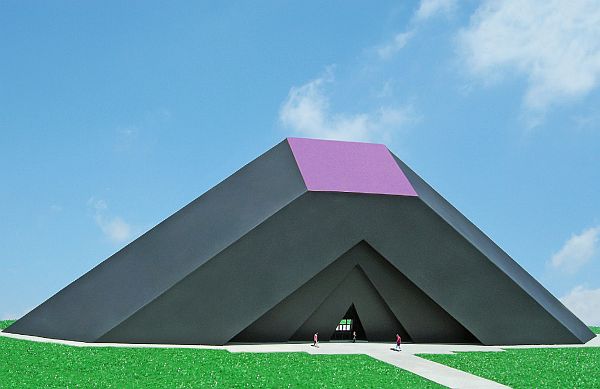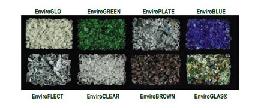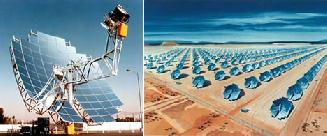
Architectural designs have been time and again inspired by curious and exceptional influences, but this time Michael Jantzen has seriously transcended to an altogether different level by envisaging the extraordinarily remarkable conception in the form of the Sun Shadow Pavilion. The influence in this case literally alludes to the name itself, as the above pictured design was stimulated by the shadows cast on a flat white surface, which had a large square array of photovoltaic solar panels mounted upon it. The final three dimensional pyramidal embodiment was the result of inserting solid planes (along the patterns) from the brim of each of the eight shadows to the periphery of the solar panels.
In this case the spatial experiment relating to the shadows was done on 3rd June, 2011 from 9AM to 5PM. But the unconventionality of the design is quite apparent when we take into the different patterns of shadows (cast from the solar panels) during different times of the year. This literally allows a myriad of flexible design forms relating to the intrinsic dimensions of location, date and time. This means the shape of the final structure would change in relation to different places on Earth.
But visual aesthetics aside, the design will also include a plethora of sustainable features, such as clean and green electrical power generated by a whole system of translucent solar panels. The translucent solar panels would also allow some degree of natural lighting to be inducted inside the pavilion. The dark colored facade of the building will have double membranes for accentuation of diffusion of warm and cold air. Moreover, some part of it will be utilized for collection of rainwater to be stored further in underground containers.
Finally, the eight hour shadow patterns would be painted on the floor of the pavilion in order to convey the origin of the three dimensional shape of the structure to the visitors. So basically, at the end of the day, we have a fascinating iteration of high art that makes its mark as an ingenious example of a sustainable wonderland.
[Thanks, Michael Jantzen]




